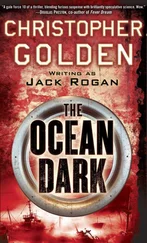Less than eight months into the Trump administration, Bannon had alienated the president whom he had worked so hard to elect. His self-aggrandizing in the press had annoyed Trump, and his public attacks on Jared Kushner had forced the president to choose between a staffer and his own son-in-law. One of Bannon’s final acts before getting fired was to launch a public attack on Thornton.
Bannon called a reporter from the liberal American Prospect and ridiculed Trump’s desire to enter diplomatic negotiations with Kim Jong Un. In that interview, Bannon also promised to make sure Thornton never got the job as the State Department’s lead Asia official permanently. Bannon liked to call reporters and vent about the economic war with China. I had been on the receiving end of such calls as well. For Bannon, it was the last straw. He maintains he had already planned to resign.
After Bannon got fired in August 2017, Tillerson personally intervened on Thornton’s behalf, and in December the White House nominated her for the job. Bannon continued his war on Thornton and lots of other bureaucrats from his perch atop the Breitbart News machine. But in the end, Thornton’s bid was tanked by Senator Marco Rubio (R-FL). Working first behind the scenes, Rubio’s staff slowed the nomination. When Tillerson was eventually fired in March 2018, Rubio announced he would formally oppose Thornton’s nomination. Pompeo was not about to fight for her, and so she resigned and retired from the foreign service that summer.
Smearing McMaster
Meanwhile, the infighting between the factions never let up. Starting in the fall of 2017, pro-Trump forces had begun a smear campaign against Pottinger’s boss, McMaster. According to the various articles with unnamed sources, McMaster was not sufficiently pro-Israel, not sufficiently pro-Trump, and some even accused him of having a drinking problem. His enemies spread a rumor he was having an affair with another senior White House staffer. There was never any evidence of excessive drinking or the affair, and people who know them say there is no way it happened. But the rumors reached Trump—and Trump believed them.
“Have you heard who McMaster is fucking?” Trump once asked nobody in particular during a crowded staff meeting in the Oval Office. “He’s gonna get us all in trouble if he can’t keep his dick in his pants.”
There’s no way to know for sure where the smears were coming from, but McMaster knew who his enemies were. He had run afoul first of Bannon, by removing him from the National Security Council when taking over for Flynn. He also managed to eventually fire a Bannon ally, Ezra Cohen-Watnik, who was the senior director for intelligence on the National Security Council staff but had become entangled in the Russiagate investigation. Cohen-Watnik left the White House in August, just as the McMaster smears started coming out. He took a job at Oracle, working for its CEO, Safra Catz, a billionaire and major Republican donor who also had worked on the Trump transition.
In November, BuzzFeed reported that at a July dinner with Catz, McMaster had called Trump a “dope” and an “idiot” and had insulted Jared Kushner for good measure. But the dinner, which had been arranged by Kushner, was meant to be an opportunity for McMaster and Catz to get to know each other; it didn’t make sense that McMaster would bash Kushner to Catz when he knew they were close friends. That dinner is also said to be the source of the rumor about McMaster and the other senior White House staffer (who attended the dinner), the gossip being that they had appeared too chummy when outside the White House grounds. Again, there’s no factual basis for that allegation.
Catz denied every part of the reporting about the dinner. But the endless rumors and leaks eventually took their toll and helped to turn Trump against McMaster. He would resign in April 2018. He had been promised a fourth star and a prime posting in the army command, but the ice melted beneath him before that could be squared away. Cohen-Watnik would end up rejoining the Trump administration, eventually being appointed acting undersecretary of defense for intelligence in the final two months of the administration.
5
The Trumps Go to Asia
While the trade investigations were under way, and US national security officials were quietly putting together the plans and strategies for what might come out of them, President Trump was preparing for his next big in-person interaction with Xi Jinping after the Mar-a-Lago summit. This time, they would be meeting on Xi’s turf.
Beijing was the key stop in Trump’s first big, thirteen-day tour of Asia as president in November 2017. After short stops in Hawaii, Japan, and South Korea, Trump arrived in Beijing and Xi brought out all the pageantry Trump could have hoped for, and the two leaders had a largely friendly visit. Routine and unremarkable statements were issued on trade and North Korea, avowing that the two sides intended to work toward a resolution but without any specifics. Throughout, Trump focused on maintaining the positive atmosphere that he believed was key to maintaining his close friendship with Xi. “My feeling toward you is incredibly warm,” Trump told his counterpart at his Beijing press conference on November 9, an event that included no questions from the press. “We have great chemistry. I think we’ll do tremendous things, China and the U.S.”
Before the trip, there had been a formal interagency process to determine what the goals would be, and how the president should approach his interactions with Xi. The process determined that the administration would take a firm stance and avoid making any concrete trade concessions or agreeing to any of Beijing’s concepts of “great power relations” or “grand bargains.” Trump followed these recommendations, to an extent, but he veered off message at various points as he always did. In their bilateral meeting, he surprised the Chinese side by pointing at each of his staffers and telling them to speak on the issues they were in charge of inside the US government.
H. R. McMaster delivered the talking points on the South China Sea. Robert Lighthizer delivered the points on trade and intellectual property theft. Rex Tillerson spoke on North Korea. And so on. After having failed to agree on a joint statement at Mar-a-Lago, the two sides decided to issue a joint statement that was fairly benign. It mentioned the trade issues in language that, for Trump, was relatively mild. Although the entire statement was negotiated, half of it was attributed to each leader. Trump’s half of the statement didn’t mention human rights or the unfolding story of Chinese repression of the Uyghurs in Xinjiang.
John Bolton, in his book, claims Matt Pottinger told him Trump endorsed the idea of the internment camps during this trip (which occurred before Bolton joined the administration). That’s true—but Trump did not say that to the Chinese officials, only to his own staff. Still, it alarmed them to hear it.
Commerce Secretary Wilbur Ross brought with him a large delegation of American CEOs. The White House put out a list of $250 billion in “deals” that were supposedly signed during the trip for US businesses. A lot of them never panned out. For example, $83 billion of the total was attributed to an alleged deal to develop the state of West Virginia’s shale industry between the state and Shenhua Group, a Chinese state-run mining conglomerate that was later absorbed into the China Energy Investment Corporation. The hastily arranged agreement didn’t anticipate national security concerns regarding Chinese control of US energy resources, however, and has been held up by investigations and lawsuits ever since.
But absent any major public scandals, the Beijing stop was considered a success. Trump still had several days of travel to go, however, and many more meetings with other world leaders. And he was not enthused about it.
Читать дальше











